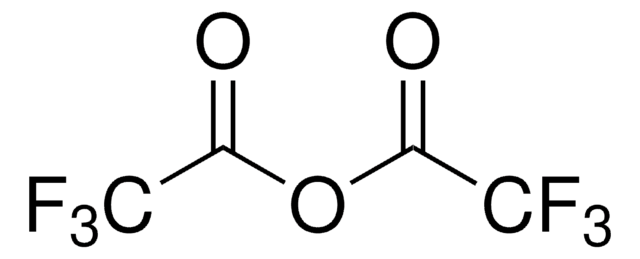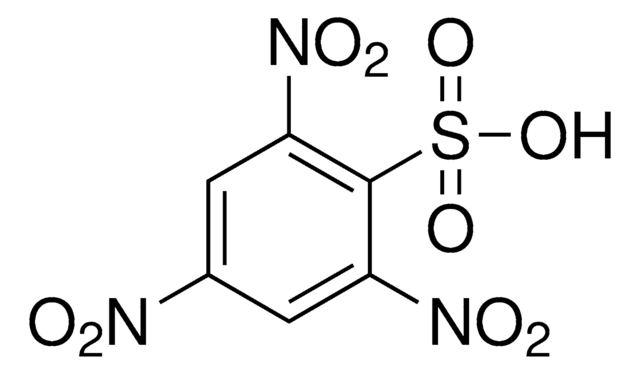17-10099
ChIPAb+ Acetyl-Histone H4 (Lys8) - ChIP Validated Antibody and Primer Set
serum, from rabbit
Synonym(e):
H4K8Ac, Histone H4 (acetyl K8)
About This Item
Empfohlene Produkte
Biologische Quelle
rabbit
Qualitätsniveau
Antikörperform
serum
Klon
polyclonal
Speziesreaktivität
human, yeast, Saccharomyces cerevisiae
Hersteller/Markenname
ChIPAb+
Upstate®
Methode(n)
ChIP: suitable
immunoprecipitation (IP): suitable
western blot: suitable
NCBI-Hinterlegungsnummer
UniProt-Hinterlegungsnummer
Versandbedingung
dry ice
Allgemeine Beschreibung
The ChIPAb+ Acetyl-Histone H4 (Lys8) set includes the Acetyl-Histone H4 (Lys8) antibody, a negative control rabbit serum, and qPCR primers which amplify a 134 bp region of human HSPCA. The Acetyl-Histone H4 (Lys8) and negative controls are supplied in a scalable "per ChIP" reaction size and can be used to functionally validate the precipitation of Acetyl-Histone H4 (Lys8)-associated chromatin.
The N-terminal tail of histone H4 protrudes from the globular nucleosome core and can undergo several different types of epigenetic modifications that influence cellular processes. These modifications include the covalent attachment of methyl or acetyl groups to lysine and arginine amino acids and the phosphorylation of serine or threonine.
Spezifität
Immunogen
Anwendung
Epigenetik & nukleäre Funktionen
Histone
Sonicated chromatin prepared from HeLa cells (1 X 106 cell equivalents per IP) were subjected to chromatin immunoprecipitation using either 2 µL of Normal Rabbit Serum or 2 µL of Anti-Acetyl-Histone H4 (Lys8) and the Magna ChIP A Kit (Cat. # 17-610).
Successful immunoprecipitation of Acetyl-Histone H4 (Lys8) associated DNA fragments was verified by qPCR using ChIP Primers, human HSPCA for a positive, and known Negative Primers (Martinato, F., et al., 2008) as a negative assay (Please see figures).
Data is presented as percent input of each IP sample relative to input chromatin for each amplicon and ChIP sample as indicated.
Please refer to the EZ-Magna ChIP A (Cat. # 17-408) or EZ-ChIP (Cat. # 17-371) protocol for experimental details.
Western Blot Analysis:
Representative lot data.
Sodium Butyrate-treated HeLa acid extract was resolved by electrophoresis, transferred to PVDF membrane and probed with Anti-Acetyl Histone H4 (Lys8) (1:1000 dilution). To demonstrate specificity, serum was preincubated with modified Histone H4 peptides:
Lane 1: No peptide
Lane 2: acetyl-Histone H4 (K5) (Cat.#:12-343)
Lane 3: acetyl-Histone H4 (K8) (Cat.#:12-344)
Lane 4: acetyl-Histone H4 (K12) (Cat.#:12-345)
Lane 5: acetyl-Histone H4 (K16) (Cat.#:12-346)
Lane 6: acetyl-Histone H4 (K5, 8, 12, 16) (Cat.#:12-353)
Lane 7: Histone H4 (Cat.#:12-347)
Proteins were visualized using a donkey anti-rabbit IgG conjugated to HRP and visualized using a chemiluminescence detection system (Please see figures).
Immunoprecipitation: 5 μL of a previous lot immunoprecipitated acetyl Histone H4 from 1 mg of wild type whole cell yeast lysates but not from a yeast strain containing a Histone H4 Lys8R substitution.
Verpackung
Qualität
Sonicated chromatin prepared from HeLa cells (1 X 106 cell equivalents per IP) were subjected to chromatin immunoprecipitation using either 2 µL of Normal Rabbit Serum or 2 µL of Anti-Acetyl-Histone H4 (Lys8) and the Magna ChIP® A Kit (Cat. # 17-610).
Successful immunoprecipitation of Acetyl-Histone H4 (Lys8) associated DNA fragments was verified by qPCR using ChIP Primers, human HSPCA (Please see figures).
Please refer to the EZ-Magna ChIP A (Cat. # 17-408) or EZ-ChIP (Cat. # 17-371) protocol for experimental details.
Zielbeschreibung
Physikalische Form
Normal Rabbit Serum. One vial containing 100 μL of antiserum containing 0.05% sodium azide.
Store at -20°C.
ChIP Primers, HSPCA. One vial containing 75 μL of 5 μM of each primer specific for human HSPCA.
Store at -20°C.
FOR: GCA ACA GCT ACC ACA GGA CCA
REV: GAG CGT GTG AAA TCA ACA TAA AGC
Lagerung und Haltbarkeit
Hinweis zur Analyse
Includes negative control normal rabbit serum antibody and primers specific for human HSPCA.
Rechtliche Hinweise
Haftungsausschluss
Lagerklassenschlüssel
10 - Combustible liquids
Analysenzertifikate (COA)
Suchen Sie nach Analysenzertifikate (COA), indem Sie die Lot-/Chargennummer des Produkts eingeben. Lot- und Chargennummern sind auf dem Produktetikett hinter den Wörtern ‘Lot’ oder ‘Batch’ (Lot oder Charge) zu finden.
Besitzen Sie dieses Produkt bereits?
In der Dokumentenbibliothek finden Sie die Dokumentation zu den Produkten, die Sie kürzlich erworben haben.
Unser Team von Wissenschaftlern verfügt über Erfahrung in allen Forschungsbereichen einschließlich Life Science, Materialwissenschaften, chemischer Synthese, Chromatographie, Analytik und vielen mehr..
Setzen Sie sich mit dem technischen Dienst in Verbindung.






